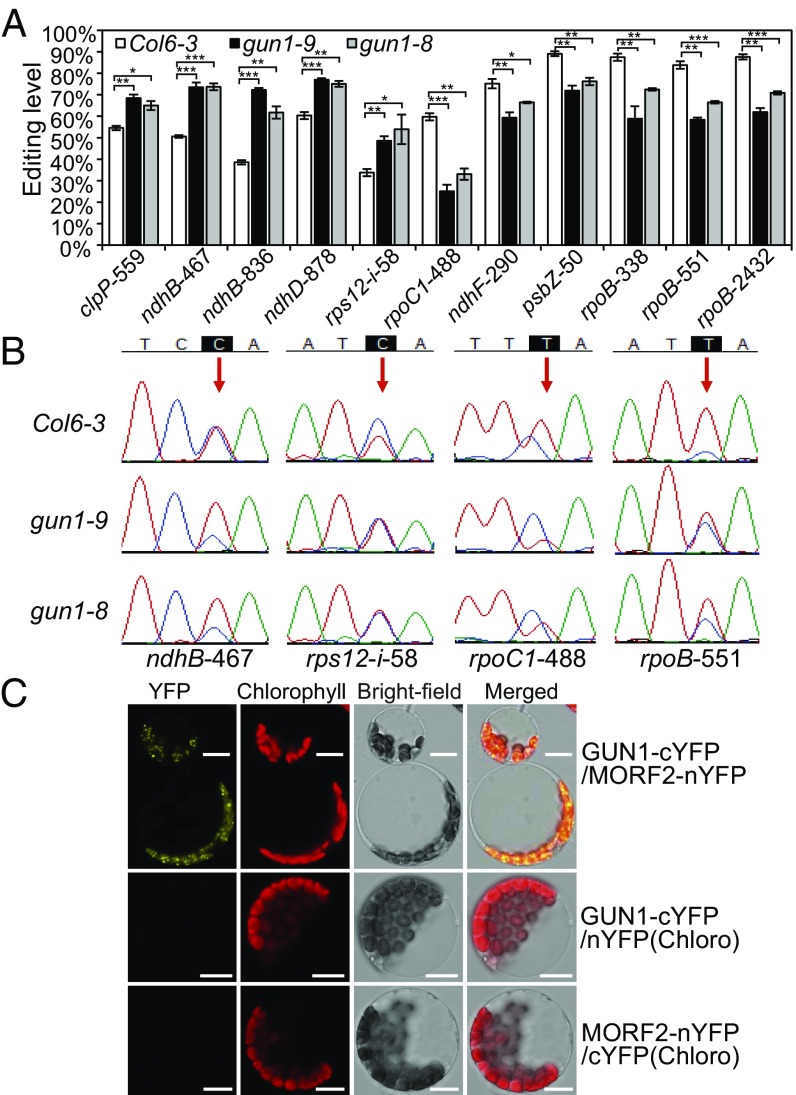Fig. 1.
GUN1 is required for the regulation of RNA-editing efficiency at multiple sites in plastids under NF treatment, and it interacts with MORF2. (A) RNA-editing levels of different sites in plastid altered by gun1 mutation under NF treatment. Col6-3 is the wild type. The x axis indicates different editing sites. The y axis represents the C to T (equal C to U in RNA) editing level. Data are mean ± SEM (three biological replicates). *P < 0.05; **P < 0.01; ***P < 0.001, two-tailed Student’s t test. (B) Sequencing chromatograms show RNA-editing profiles of representative sites indicated by red arrows. The peak for C is in blue and the peak for T is in red. (C) GUN1 interacts with MORF2 as shown by BiFC assay. nYFP: N-terminal YFP; cYFP: C-terminal YFP. nYFP(Chloro) and cYFP(Chloro) represent chloroplast-targeted nYFP and cYFP, respectively. Chlorophyll red autofluorescence indicates the localization of chloroplasts. Bright-field images correspond to the protoplast cells. Merged images show the colocalization of YFP and chloroplasts. GUN1-cYFP/nYFP(Chloro) and MORF2-nYFP/cYFP(Chloro) cotransformations are negative controls. (Scale bar, 10 μm.)

